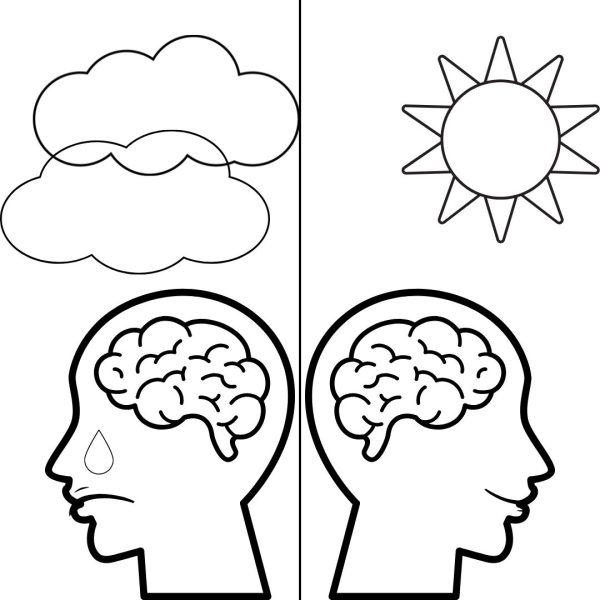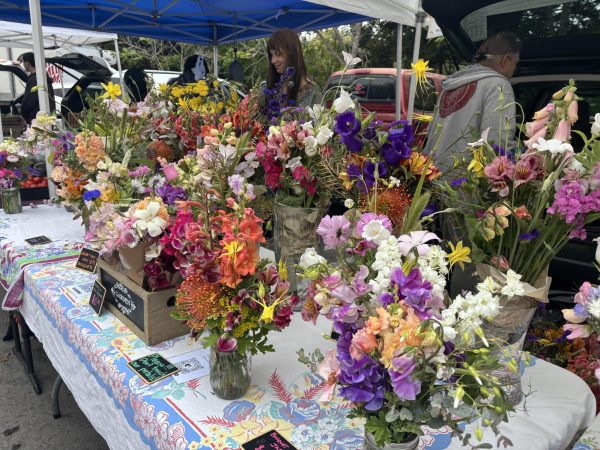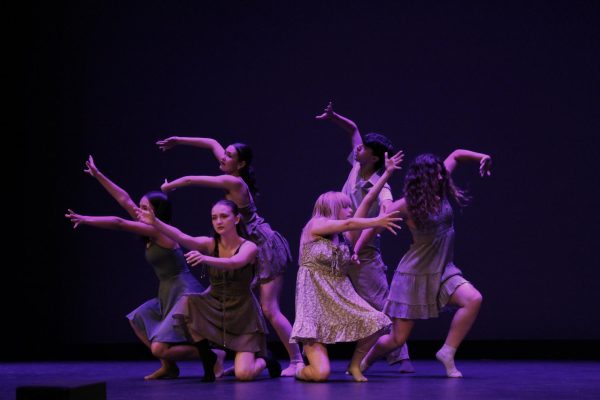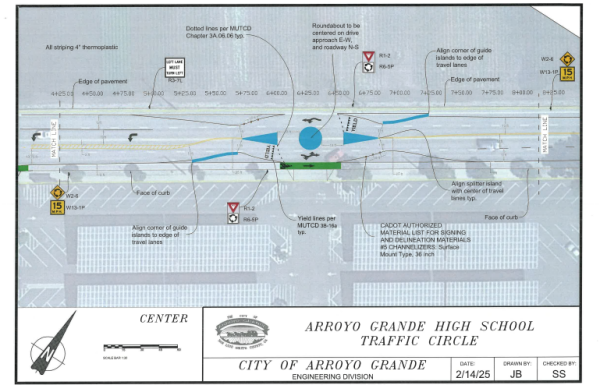Origins of “Alphabet Mafia” and the need for LGBTQ+ awareness
Pride flags, their origins and what they represent

The original pride flag, produced by Gilbert Barker for the San Francisco Gay Freedom Day celebration.
The LGBTQ+ community, or better known on TikTok as “The Alphabet Mafia”, is an acronym for “Lesbian, Gay, Bisexual, Transgender, and Queer/Questioning.” These terms are used to describe a person’s sexual orientation or gender identity, but the plus sign means that there are even more letters to represent additional identities. There are many different gender identities, sexualities, romantic identities, and flags dedicated to representing certain groups of people.
Each flag has many different meanings and some have changed since they were first unveiled to the world. There are many different pronouns for people of different gender identities, and there are ways to properly respect a person’s pronouns.
Over the past twenty years, people in the United States have undoubtedly experienced an evolution in understanding and acceptance of Lesbians, Gays, Bisexuals, Transgender, and queer people who are affiliated with the LGBTQ+ community.
Consequently, media coverage of LGBTQ+ issues has moved beyond political dichotomies and more towards representation, not only of the diversity of LGBTQ people’s lives, families, and fundamental inclusion in the roots of American society.
Today, LGBTQ people’s stories are likely to be told in the same fashion as others, with fairness, integrity, and total respect.
Some journalists have realized that LGBTQ people have the right to fair, accurate, and inclusive reporting of their tales and their struggles. GLAAD’s Media Reference Guide, which is now in its tenth edition, has tools that GLAAD can use to tell LGBTQ+ people’s stories in ways to bring out the best in journalism.
GLAAD’s Media Reference Guide’s purpose is to be used by journalists reporting for mainstream media outlets who want to tell LGBTQ stories fairly and as accurately as possible. It is not, stressed not, to be used as an all-inclusive glossary of the language used within the LGBTQ+ community, nor it is a prescriptive guide for LGBTQ+ people.
The LGBTQ+ community has claimed many different symbols for self-identification to demonstrate unity, pride, shared values, and allegiance to one another. LGBTQ symbols communicate ideas, concepts, and identity both within their communities and social media. The two most internationally recognized LGBTQ symbols are the pink triangle and the rainbow flag.
Before we dive into the meaning of flags and their colors, the history of the LGBTQ+ should be covered as well.
Now, the LGBTQ community dates back to the first recorded instances of same-sex love and sexuality of many different ancient civilizations. This includes the history of Lesbian, Gay, Bisexual, and Transgender people and cultures around the globe.
After many centuries of persecution, resulting in shame, suppression, and secrecy- LGBTQ+ history has only, in more recent decades, been pursued and interwoven into more historical narratives.
In 1994, the annual observance of LGBTQ History Month began in the United States and it has been picked up in many other countries. This observance involves highlighting the history of the people, LGBTQ rights, and many different related civil rights movements. National Coming Out Day is celebrated in the United States on October 11th.
Meanwhile, in the United Kingdom, it is observed during February to correspond with the major celebration of the abolition of Section twenty-eight in 2005, which had prohibited local authorities from discouraging homosexuality.
On June 28, 1969, there was a police raid that began in the early morning hours at the Stonewall Inn in Greenwich Village, a neighborhood in Manhattan, New York City. Patrons of the Stonewall, other Greenwich Village lesbian and gay bars, and many neighborhood people fought back when the police became violent. The riots are widely considered to constitute one of the most important events leading to the gay liberation movement and the twentieth-century fight for LGBTQ+ rights in the United States.
In autumn of 1959, New York City’s police force of Wagner administration started closing the city’s gay bars, which was almost 2 dozen in Manhattan at the beginning of 1959.
This was largely the result of a sustained campaign by the right-wing New York Mirror newspaper columnist, Lee Mortimer.
Existing gay bars were quickly closed and new ones lasted only a short amount of time.
On April 21, 1966, Dick Leitsch, Craig Rodwell president and vice president of the New York Mattachine Society, and Mattachine activist John Timmons, staged the Sip-In at Julius’ Bar which was on West 10th Street in Greenwich Village. It resulted in the anti-gay accommodation rules of the New York State Liquor Authority being overturned.
These SLA (Service-Level Agreement) provisions declared that it was illegal for homosexuals to congregate and be served alcohol in bars. In 1940 when Gloria’s, a bar that was closed for such violations, tried to fight the case in court but unfortunately, lost the battle.
The Stonewall Riots were a series of very violent conflicts between gay men, drag queens, transsexuals (who are now named transgender), and lesbians who were all against a police officer raid in New York City. No matter how violent the riots were, it was a turning point for the LGBTQ+ people.
The first night of rioting began on Friday, June 27, 1969, at, roughly estimated, 1:20 a.m. when police raided the Stonewall Inn, which was a gay bar operating without a state license in Greenwich Village.
In the sixties, huge marches had become commonplace and the Stonewall disturbances were small. It was the commemoration in March, 1 year later, which was organized by Craig Rodwell, who was the owner of the Oscar Wilde Memorial Bookshop, who drew five-thousand marchers up New York City’s Sixth Avenue. That drew nationwide attention and put the Stonewall events on the map and it led to the modern-day Pride Marches.
A new period of liberalism in the late 1960s, the popularity of disco music and the culture, in many ways, made society more accepting of gays and lesbians.
However, in late 1979, a new religious revival ushered in the conservatism that would take over the United States in the 1980s, made life hard once again for the LGBTQ+ community.
There are many flags that represent the many different types of sexual identities, romantic identities, gender identities, and the colors have their own representation as well as their own history.

Gilbert Barker designed this rainbow Pride Flag in 1978 for the San Francisco Gay Freedom Day celebration. He designed this flag as a “Symbol of Hope and Liberation” and as an alternative to the pink triangle.
It represents the diversity of gays and lesbians around the world. In the original flag, pink stood for sexuality, red for life, orange for healing, yellow for the sun, green for nature, turquoise for art, indigo for harmony, and violet for spirits.
In 2000, a copy of the original 20-by-30 foot, the eight-color flag was remade by Barker that was installed in the Castro District in San Francisco. Due to the lack of fabric for pink and turquoise, the original eight-color flag was condensed into this six-color flag featuring royal blue instead, which has been the flag from 1979 to the present day.
People who identify as Aromantic are very special people who are 100% valid members of the LGBTQ+ community.

One of the things about aromantic people is that, despite feeling no romantic attraction, they can still enjoy sex. They are not necessarily incapable of feeling love. They can still feel familial love or platonic love towards friends. In the flag, there are five colors, green, light green, white, grey, and black. Green represents aromanticism, light green is the aromantic spectrum, white is aesthetic attraction. Gray represents grey-aromantic (which is basically in between being aromantic and not at the same time) and black representing demiromantic.
The Asexual pride flag has four colors: black, grey, white, and purple.

The flag was created by the Asexual Visibility and Education Network in August of 2010 and it was a community effort. The black stripe represents asexuality, grey is grey-sexuals/demisexuals, white is for allies and the purple stripe represents the community.
Bear Culture or the International Bear Brotherhood. This flag was created by Craig Byrnes in 1995 and since then, the term Bear has been used as an affectionate gay slang term for men who have hairy bodies and/or facial hair.
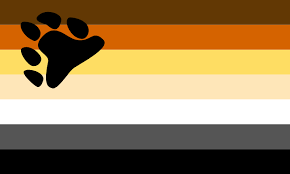
Other characteristics that a ‘Bear’ would possess would be a male who is heavy set (sometimes), a male who projects the image of working-class masculinity in topics such as grooming their hair (facial or hair on their head), and their overall appearance. However, the Bear concept can function in many different ways, from self-identifying, to being affiliated with the concept, it can even be an ideal to live up to. It’s all about how the person feels.
This flag was unveiled to the world on December 5th, 1998 by Michael Paige. The idea of the Bisexual flag was to increase the visibility of Bisexuals in the LGBTQ+ community as a whole.
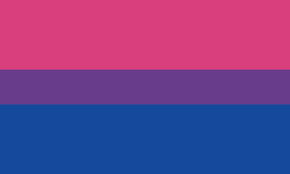
The colors of the flag are magenta/pink at the top, a deep lavender in the middle, and a blue at the bottom. The ratio of colors is 2:1:2. Now, the pink represents same-sex attraction only (gays and lesbians) while the blue represents sexual attraction towards the opposite gender (straights) but, purple is sexual attraction to both the same gender and opposite gender. “The key to understanding the symbolism of the Bisexual pride flag is to know that the purple pixels of color blend unnoticeably into both pink and blue just as in the ‘real world’, where bi people blend unnoticeably into both the gay/lesbian and straight communities,” Paige says.
Now, let’s clear up some misconceptions about Intersex. Intersex people are people who do not exhibit all biological characteristics of male or female or they exhibit a combination of characteristics at birth.

Out of the 7 billion people on this planet, 0.05%-1.7% of the population is estimated to have intersex traits. This flag was created in July of 2013 by Morgan Carpenter, the President of the Organisation Intersex Internation Australia. The organization spoke about the purple circle in the center of the yellow flag, “Unbroken and unornamented, symbolizing wholeness, completeness and our potentialities. We are still fighting for bodily autonomy and genital integrity and this symbolizes the right to be who and how we want to be.”
The Labry flag was made in 1999 by Sean Campbell for Lesbian representation.
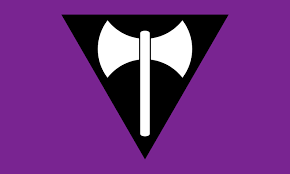
This flag was published in the June 2000 Palm Springs edition of the Gay and Lesbian Times Pride Issue. The Labrys, a form of the double-headed ax, was associated as a weapon used by the Amazons of mythology. This double-headed ax was adopted as a symbol of empowerment by a group of lesbian feminists in the 1970s.
This is the “pink” lesbian flag which consists of many shades of red and pink with a white bar in the center, this flag was derived from the lipstick lesbian flag, which includes a red kiss in the corner.

The lipstick lesbian flag was introduced on the This Lesbian Life weblog in 2010. The Lipstick Lesbian flag represents “Homosexual women who have a more feminine gender expression” but, it has not been widely adopted, its non-kiss “pink” has attracted more use.
A new lesbian flag was designed after the “pink” flag was introduced in 2018 on Tumblr. The colors are dark orange which represents gender nonconformity, orange for independence, and light orange for the community.
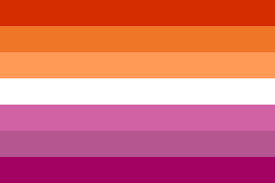
White for unique relationships to womanhood, pink for serenity and peace. Dusty pink for love and sex and finally, dark rose for feminity. Soon after, a five-stripe version was released.
Created in 2014 by activist Kye Rowan, the non-binary flag has four colors that represent different types of non-binary identities. Yellow for people who identify outside of the gender binary.
White for people with multiple genders.
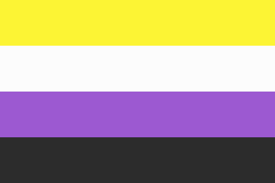
Purple for those with a mixture of both male and female genders and finally black, for agender
people. Under this non-binary umbrella, are all those who identify off of the gender binary. There are different categories, androgyny, genderqueerness (which includes gender fluid, intergender), third gender, and transgender.
The Pansexual pride flag was introduced in October 2010 on a Tumblr blog. The pink represents attraction to women,
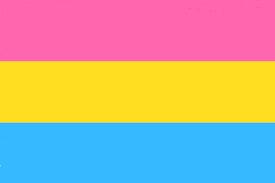
blue being attracted to men, and yellow being attracted to everyone else such as non-binary, agender, bigender, and genderfluid.
Sometimes, a “P” with the tail turned into an arrow with a cross is in use.
This flag was designed by Monica Helms in 1999, a transgender woman. It was first shown at a pride parade in Phoenix, Arizona, US, in 2000. Flown from the large public flagpole in San Francisco’s Castro District since November 19th, 2012, to celebrate the Transgender Day of Remembrance. “The stripes at the top and bottom are light blue, the traditional color for baby boys. The stripes next to them are pink, the traditional color for baby girls. The white stripe is for people that are nonbinary, feel that they don’t have a gender” Helms described the meaning of the flag.
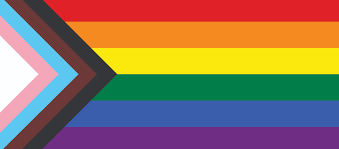
As America mourns over the death of George Floyd, some say the LGBTQ+ community can honor his memory by ensuring that People of Colour are included on the Pride Flag.
This flag was designed by Daniel Quaser from Portland, Oregon in 2018. Others also advocated that LGBTQ+ communities embrace Quasar’s banner during the 50th Pride month, to tribute activists such as Marsha P. Johnson and Sylvia Rivera, who were instrumental in the 1969 Stonewall Inn riots. LGBTQ+ Stem, which advocates for queer and trans inclusion in fields such as Science and Technology, noted that the LGBTQ+ community “wouldn’t have Pride Today without the activism of Transgender People of Colour.”
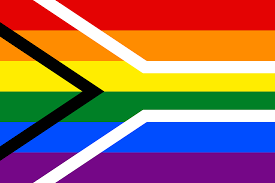
This is the Gay Pride Flag of South Africa designed by Eugene Brockman.
It’s a symbol that aims to show the freedom and diversity of the South African nation and to build pride in being a member of the LGBTQ+ community in South Africa. This flag was registered as a flag of the GLBTI Association of South Africa in 2012 but is not an official symbol of South Africa. The flag made its public launch on December 18, 2010, at the Mother City Queer Project costume party, held annually, and took place at the Cape Town Stadium in 2010.
These flags all have very important meanings and are really significant to the people who identify with them. Even though the world is always changing and society is starting to finally accept the LGBTQ+ community, there are still people who find the LGBTQ+ community disgusting and express their hatred towards the community in public and on social media.
In 2011, California became the first U.A. state to pass a law requiring LGBTQ+ history to be taught in public schools, but it has yet to happen. The first textbook complying with the law was only ever published in 2017 due to the opposition from conservative groups and communities. Colorado and New Jersey passed similar laws in 2019, and an LGBTQ+ history law in Illinois took effect in July 2020. Unfortunately, six southern states have laws banning LGBTQ+ history from being taught in schools.
The LGBTQ+ community is a very welcoming and friendly community. Pride Parades/Marches/Festivals are what makes the beginning of summer vacation the highlight of the year, for some people, with Pride Month being in June.
Yes there is discrimination, hatred, and the fear of being rejected when people come out to friends, family members, or anyone else they hold close to them but, being true to yourself and being the wonderful, amazing person you are, is incredibly brave and a wonderful feeling when you accept who you are.

My name is Perseus Hively. I am a Junior at Arroyo Grande High School. I am interested in writing poetry and reading, just getting lost in a world that...




